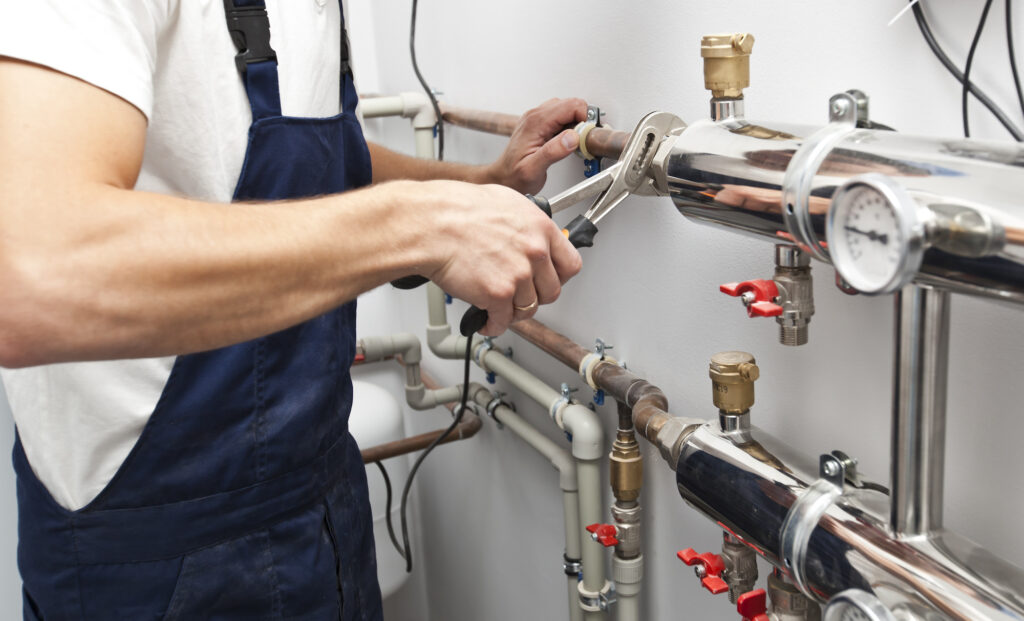This article down below relating to What to Know About Plumbing: Basics, Tips, and Insights is rather insightful. You should check this stuff out.

Plumbing is a vital aspect of any home, in charge of supplying clean water for drinking, cooking, and bathing, along with removing wastewater safely. Understanding the fundamentals of home plumbing is important for each home owner to guarantee correct upkeep, troubleshooting, and, if needed, repair services. In this newbie's overview, we'll cover the basic principles of home plumbing to assist you become much more accustomed to how it functions.
Water Heating System
The water heating unit is responsible for heating water for domestic use, including bathing, food preparation, and cleaning. Usual types of water heaters include tank-type hot water heater, tankless (on-demand) hot water heater, and heat pump hot water heater. The water heater is attached to the water system system and provides warm water to plumbing components as required.
Water drainage System
The drainage system removes wastewater from your home and brings it away to a sewage therapy center or septic tank. It consists of a network of pipelines, installations, and components that carry wastewater from plumbing components to the primary sewer line or septic system. Proper drain is vital to prevent blockages, back-ups, and sewer leakages.
Ventilation System
The air flow system assists maintain appropriate air pressure and prevent sewage system gases from entering your home. Air vent pipelines, additionally referred to as vent heaps, expand from plumbing fixtures to the roof covering, permitting drain gases to escape securely outdoors. Ventilation pipes additionally enable air to enter the drainage system, promoting smooth wastewater flow and stopping suction or vacuum cleaner impacts.
Supply Of Water System
The water system system brings tidy water right into your home from a local water source or a private well. It includes a major water line that connects to your home's plumbing system, typically situated underground. A water meter gauges the quantity of water eaten, while a shut-off shutoff allows you to manage the flow of water into your home.
Plumbing Components
Plumbing components are gadgets that supply water to different parts of your home and include sinks, faucets, bathrooms, showers, bathtubs, and home appliances such as dishwashers and washing devices. Each component is attached to the water system using pipelines and fittings and may have its shut-off valve for maintenance or emergencies.
Typical Plumbing Tools
Having the right devices accessible is vital for carrying out standard plumbing repairs and upkeep jobs. Usual plumbing devices include flexible wrenches, pipe wrenches, pliers, pipeline cutters, hacksaws, bettors, augers (or drain snakes), and Teflon tape. Having these devices conveniently available can help you deal with minor plumbing concerns efficiently.
Fundamental Plumbing Repair Services
While some plumbing repairs may call for specialist help, many usual problems can be addressed with fundamental do it yourself strategies. Understanding exactly how to repair a leaking tap, unblock a drainpipe, replace a bathroom flapper, or repair a trickling showerhead can conserve you time and money on plumbing repair services.
Final thought
Recognizing the fundamentals of home plumbing is vital for each property owner to maintain a safe, useful, and reliable plumbing system. By familiarizing yourself with the water supply system, plumbing fixtures, water drainage system, ventilation system, typical plumbing devices, and fundamental fixings, you can confidently attend to minor plumbing problems and ensure your home's plumbing system runs smoothly.
Understanding Basics of Home Plumbing System: A Beginner's Guide
The Main Components of Your Home Plumbing System
The Water Supply System
This system is responsible for transporting fresh water into your home. It usually has a main water line that splits into two branches: one directed towards cold water services and the other connected to a water heater for hot water. The pressure is key here; it ensures water reaches all parts of your house.
The Drainage System
Once water has been used, it becomes wastewater that needs to be removed from your home. This is where the drainage system comes into play. It includes all the pipes that carry wastewater and sewage away from your house to sewage treatment facilities or septic tanks.
The Vent System
The vent system prevents sewer gases from entering your home and helps maintain the pressure balance that allows wastewater to flow out properly. These vents usually exit through the roof of your house.
Water Heating System
For those who enjoy hot showers or using hot water for cleaning, the water heater is a crucial part of the plumbing system. It can be a tankless system, which heats water on demand, or a traditional water tank model.
Common Plumbing Problems and Basic Troubleshooting
Plumbing systems, while designed to be durable, can face issues like clogged drains, leaky faucets, or low water pressure. Here are some basic troubleshooting tips:
Clogged Drains
Use a plunger or a plumber's snake to try and dislodge whatever is blocking the drain. Regular cleaning can prevent clogs.
Leaky Faucets
Often caused by worn-out washers or gaskets, these can usually be replaced by someone with basic DIY skills.
Low Water Pressure
This might be due to sediment build-up in your fixtures or a leak somewhere in your water line. Cleaning out aerators or seeking a professional to detect leaks might be necessary.
Preventive Maintenance Tips
Maintaining your plumbing system is key to avoiding emergencies. Regularly check for leaks, avoid disposing of grease down the sink, and have your system inspected by a professional plumber at least once a year.

I came across that write up on Plumbing Basics For Every Home: The HomeTriangle Guide when doing a lookup on the internet. Sharing is caring. Who knows, you may just be doing someone a favor. Thank you for your time invested reading it.
Get A Free Quote